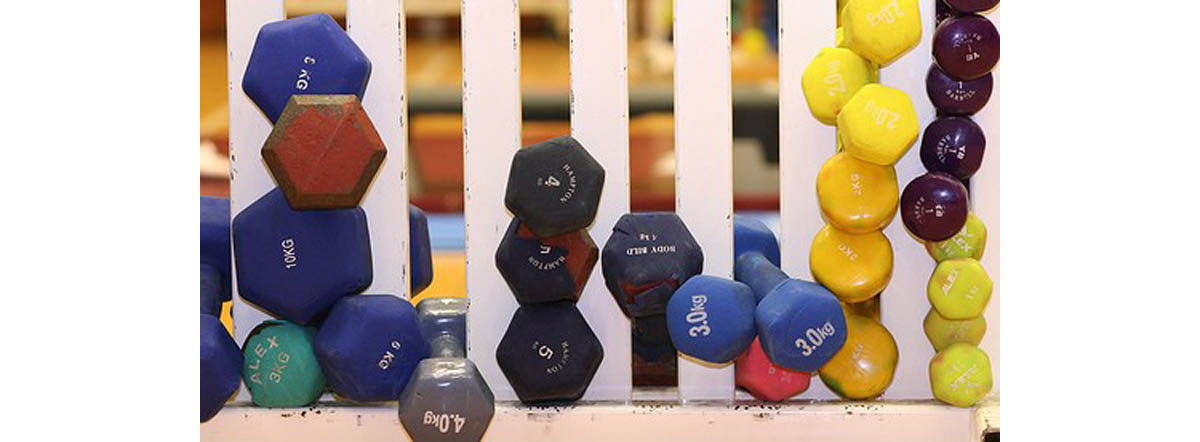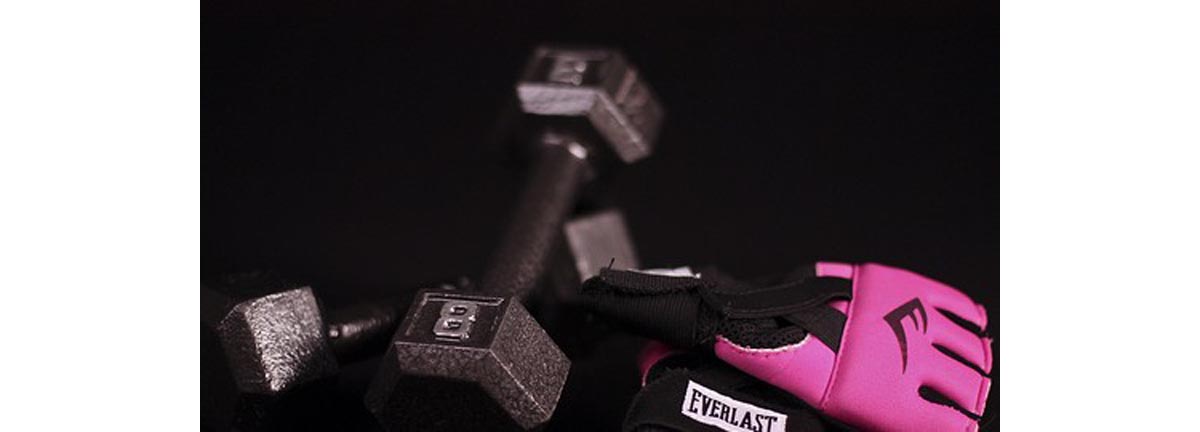Let's clear one thing up first and foremost - the old notion that cardio is the best method of training for weight loss is completely false.

Cardio certainly helps with weight loss, in that it burns calories and creates a slight metabolism boost, meaning you shed some fat, so it’s certainly useful. However, unless you're new to exercise or extremely untrained, your muscles get virtually no stimulation from cardiovascular exercise, be it jogging, swimming, cycling, rowing or slogging your guts out on the elliptical.
By performing cardio as your sole weight loss activity, you may see a drop on the scale, but you'll just end up as a smaller version of your current self - flabby, weak and wobbly.
You'll build lean muscles mass, which increases your metabolism. Your metabolism is like your body's engine - it burns calories to keep you ticking over. The more muscle you have, the harder your metabolism works, the more calories you burn and the quicker you lose weight.
Weight lifting in itself also burns calories. If you don't finish a session in a sweaty mess, struggling to walk and having virtually lost the power of speech, then you're not weight training right.
Fortunately the idea that weight training is beneficial for fat burning and weight loss is starting to get through to the mainstream. However, one myth that refuses to die, and keeps rearing its ugly, untrue, confusing head, is the notion that the best way to weight train for fat loss is to use light weights and perform a high number of repetitions.
The idea is that the longer a set lasts, the more calories you'll burn and the quicker you'll lose weight.
To the uninitiated, this certainly makes sense. After all, the logic seems to be there, so why wouldn't it work.
It's not quite as simple as that though.
We'll use two examples with the same exercise - dumbbell lunges.
If you were to grab a pair of 5-lb dumbbells and perform 15 lunges either leg, your set would probably last around a minute, going on 2-seconds per rep. It's likely you'd be slightly out of breath, have a bit of a burning feeling in your thighs due to the lactic acid and hydrogen build up, and be feeling relatively tired.
Switch those dumbbells to 25-lbs and let's see what happens.
The reps would be much tougher -- you'd struggle to retain balance, have to put everything you've got into each rep, and keep your whole body tight to maintain your posture. You might only get 6 reps per side, and each one slightly lies than your lighter set, the total set time would be around 30 seconds. Half the time, so half the calories, right?
Wrong.
During the 25-lb set, your muscles and body as a whole have to work so much harder to push you through those tough reps. The whole set might last half the time, but your body is probably close to working twice as hard as with the lighter weights.
Not only that, but heavier weights cause more muscle damage. When a muscle fiber tears, your body goes into overdrive to help repair it. Your metabolism increases again, oxygen consumption goes up and your nervous system steps up its game. This is known as EPOC – Excessive Post-exercise Oxygen Consumption. The heavier and harder you train, the bigger the effect on EPOC.
It’s pretty clear now that the theory of high reps and light weights being best for fat loss is more or less debunked. So what’s the best way to incorporate different set and rep schemes into a weight loss workout?
The Best Set And Rep Combos For Losing Weight And Torching Fat
Just because heavy training for low reps is a fantastic way to train for fat loss, and the traditional recommendation of light weights, high reps doesn’t work quite as well as you’ve been led to believe doesn’t mean you should only do one type of training.

By far the best option is to implement both heavy and high rep training.
Heavy weights should be your bread and butter – start each session with one or two seriously tough exercises, performed in the three to five rep range using challenging weights.
Too much heavy training can leave you worn out, fatigued, and over-trained, especially if you’re on a low calorie weight loss diet, which can all lead to injuries. This is where lighter training for muscle-burning high repetitions.
High reps (generally considered sets of 15-25) is the way to go when you’re exhausted following heavy lifting. You don’t need so much motor control with lighter weights, and you work a different type of muscle fibers. Lighter training also has the enormous benefit of increasing production of lactic acid.
Lactic acid is the substance that causes the burning sensation in your muscles when you lift weights for an extended period. While you may just consider it an annoyance and pain (literally) it does have its uses. Increased lactic acid production speeds up fat loss by raising your body’s growth hormone and testosterone output. Both growth hormone and testosterone have a powerful effect on your metabolism, and raise calorie output.
The best way to perform your higher rep work is in a circuit. Circuit training again makes it even more effective. Reduced rest time between exercises also stimulates lactic acid, raises your heart rate further than straight sets with rest do, and makes your metabolism take charge.
Here’s how to set up your weekly fat burning weight training program, using the optimal set and repetition schemes for weight loss.
Days – Monday, Wednesday and Friday
Workout Type – Full Body (Full body workouts burn more calories than split routines as they recruit more muscle fibers.)
Where a letter and a number are listed, perform the reps on exercise one, then immediately go to exercise two. Take a rest, then go back to one and continue until all your sets on that letter are done, then repeat the sequence with the other letters.
Take 90 seconds rest after each A2 and B2 exercise, and 30 seconds between C4 and D4.
A1. Barbell Back Squats – 3 sets of 4-6 reps
A2. Dumbbell Stiff-Legged Deadlifts – 3 sets of 10-12
B1. Barbell Bench Press – 3 sets of 4-6
B2. Cable Rows – 3 sets of 10-12
C1. Dumbbell Lunges – 2 sets of 15 each leg
C2. Weighted Sit Ups – 2 sets of 15
C3. Pushups (on knees if you need to) – 2 sets of 25
C4. Band Pullaparts – 2 sets of 25
D1. Kettlebell Swings – 2 sets of 25
D2. Overhead Presses – 2 sets of 25
D3. Chin-ups or Pulldowns – 2 sets of 15
D4. Hanging Leg Raises – 2 sets of 15
You can vary the exercises to suit your ability level and training experience if needed.
Stick to the plan, and remember – if any set feels too easy, increase the weight. Burning fat through weight training is as much about intensity as it is about sets and reps.
- “Destroying Fat: War Room Strategies to Maximize Fat Loss”, By Christian Thibaudeau, Published on March 19, 2007, Accessed on November 24th, 2012, Retrieved from http://www.t-nation.com/readArticle.do?id=1499282
- Photo courtesy of phildowsing on Flickr: www.flickr.com/photos/phildowsing/1342461644
- Photo courtesy of edjohnson841 on Flickr: www.flickr.com/photos/edjohnson841/3513329222


Your thoughts on this